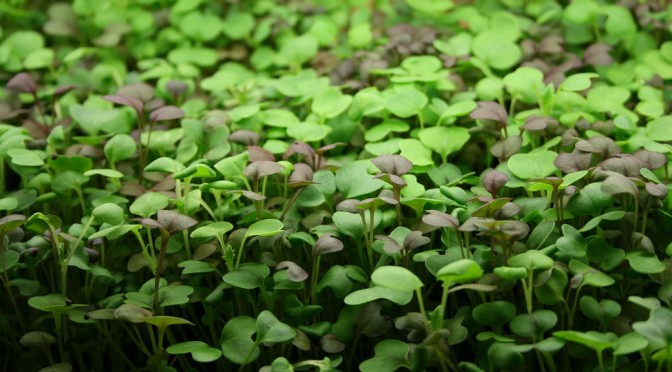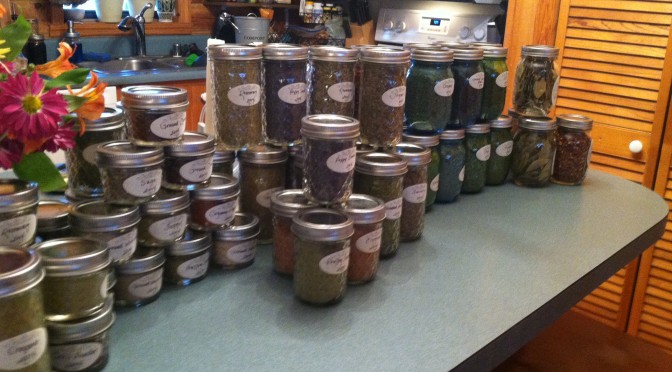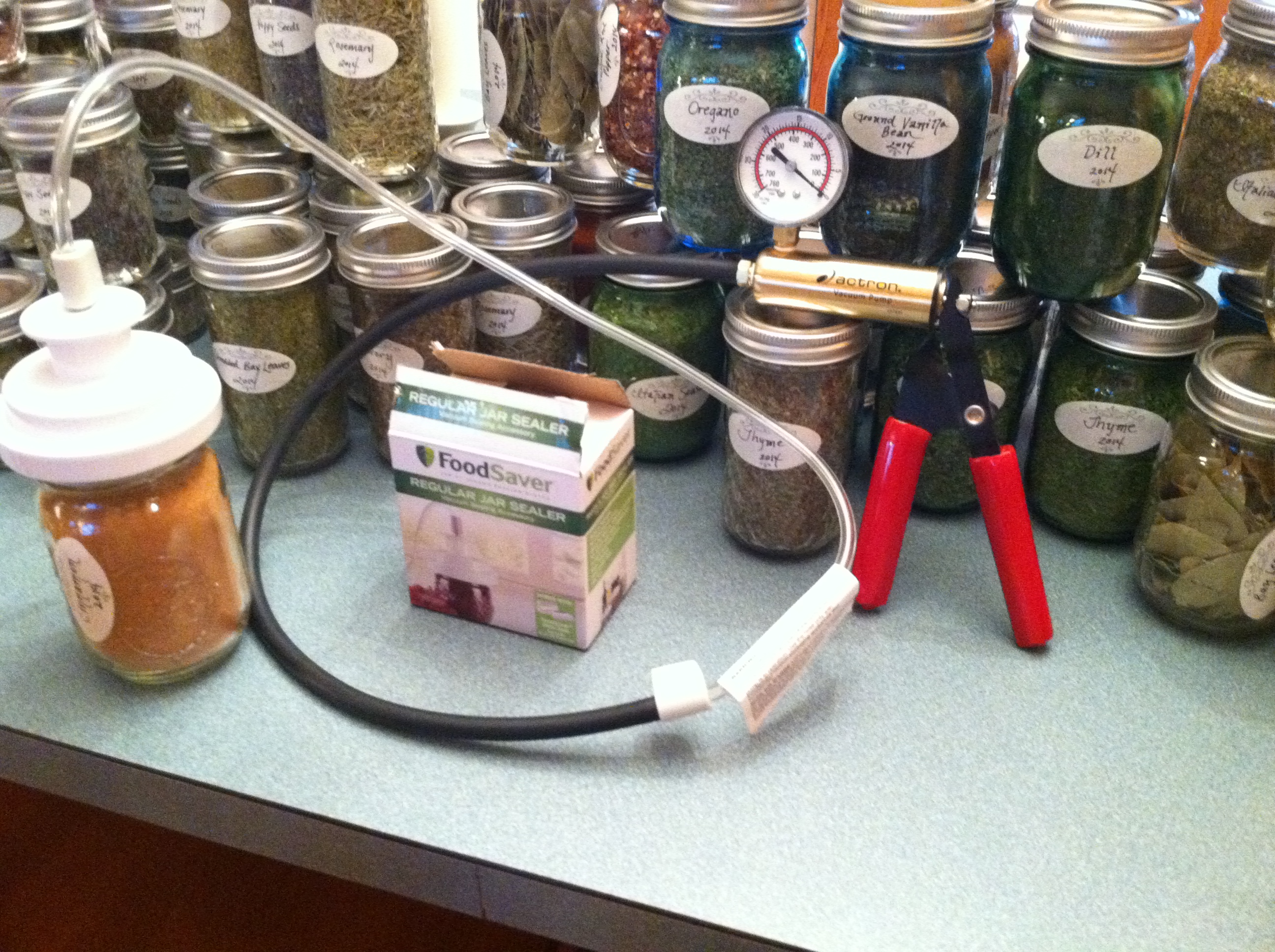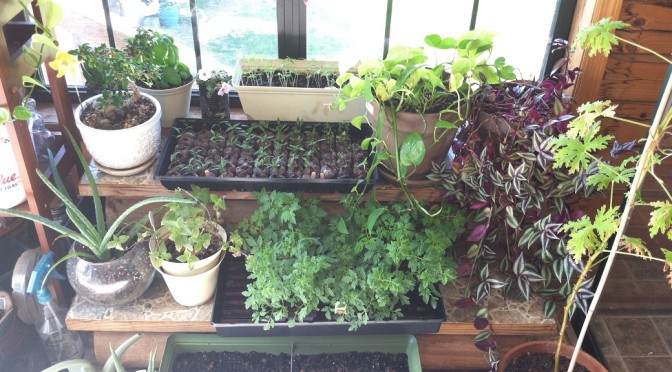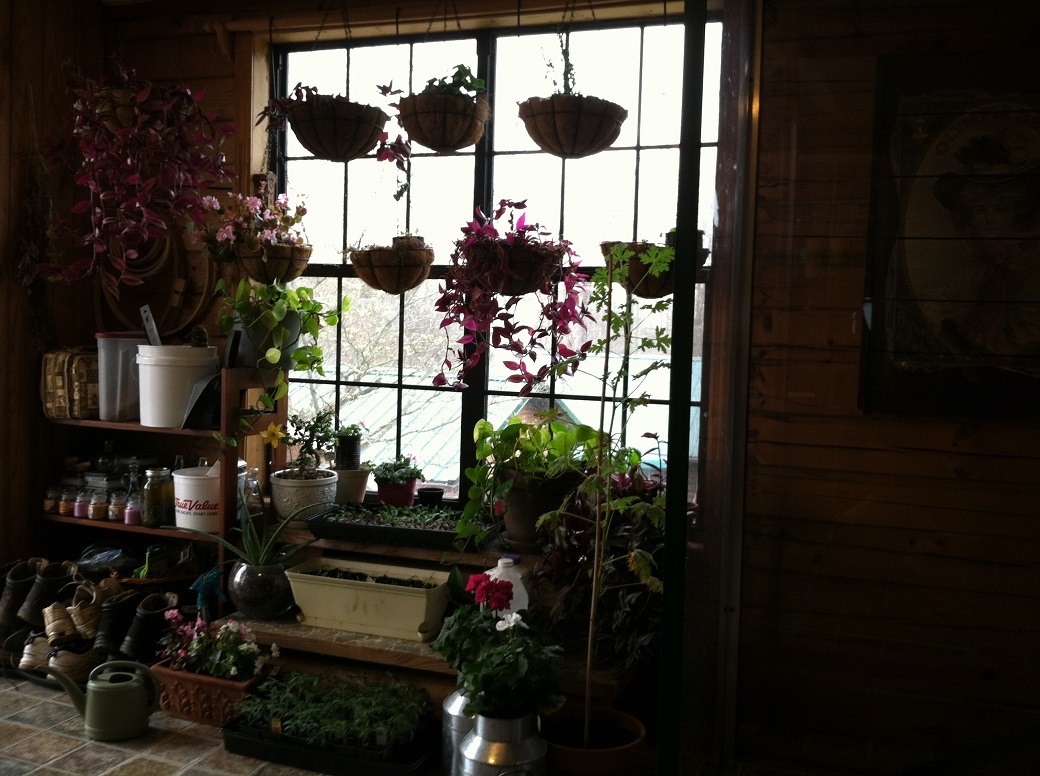From Mrs. Cog's Corner
Microgreens are a brilliant concept. Having swept the scene of upscale restaurants and finer cuisine in recent years, the idea is now hitting creative kitchens everywhere. You might be hard pressed to find an easier way to naturally produce a more tasteful and nutritional addition to your diet.
Harvested less than two weeks after germinating, these young vegetable and herb plants are cut in order to consume just the stems and leaves. They have been shown in studies to contain as much as 40 times the nutritional benefits of their mature fruit or leaves. Studies have proven that microgreens are a wonderful source of Vitamins C, E and K and some are loaded with beta-carotene. This equates to the nutrition in a small helping of microgreens exceeding that consumed in multiple portions of salad.
Easy, inexpensive and abundant, there is no better time to become proficient in producing your own organic greens no matter where you live. Prices are rising, weather for growing is undependable and sources of food are often questionable. There is an immense satisfaction in producing something so healthy on your own windowsill. I encourage everyone to give it a try.
There are hundreds of good websites and videos out there with instructions on the many ways to go about growing your own at home. Everyone seems to have a slightly different method and makes use of various supplies, so there is no one right way to go about this. Here is a video that shows and explains an easy method to grow your own.
The recipes that use microgreens are endless. They can be used as salad greens, on sandwiches, in or atop omelets, on pizzas, in salsas, topped with seafood, and the list goes on. Yummly's recipes for microgreens can be found here along with delicious pictures. More recipes and serving suggestions can be found at the bottom of the page.
Read much more about different techniques and concepts to grow and serve your own microgreens:
They are bursting with freshness, intense flavor and are so vibrant and beautiful. They're also a wonderful and economical way to get lots of nutrition yet without requiring as much time and space as full grown veggies. http://thesunnyrawkitchen.blogspot.com/2012/12/how-to-grow-microgreens.html
Their flavors, which are amazingly diverse, evolve as their leaves begin the process of photosynthesis. Carrot microgreens taste just like the vegetable. Beet microgreens are earthy, while radish and mustard greens are spicy. Kale microgreens are sweet, and cauliflower microgreens have a mild pepperiness that’s appealing. Sunflower microgreens are nutty, and clover ranges from sweet to spicy. Teensy cress microgreens can range from mild to pungent. One great favorite of pastry chefs is “popcorn shoots”—that is, microgreens grown from popcorn kernels. They are very sweet, and their eye-catching yellow color is achieved by cultivating them out of the sunlight, to prevent photosynthesis and the production of chlorophyll. http://www.takepart.com/article/2014/02/24/growing-microgreens
Microgreens won hands down (leaves down?), possessing significantly higher nutrient densities than mature leaves. For example, red cabbage microgreens have a 6-fold higher vitamin C concentration than mature red cabbage and 69 times the vitamin K. http://nutritionfacts.org/2013/05/02/are-microgreens-healthier/
Scientific research now proves that these tiny seedlings harvested and eaten when they are just a few inches tall are a real superfood packed with antioxidants and other health-promoting nutrients. HealWithFood.org combed through recently published scientific research – as well as some older studies – to uncover nutrition facts for these young edible seedlings harvested at the cotyledon leaf stage, and is happy to provide you with this overview of the nutritional value and health benefits of microgreens. http://www.healwithfood.org/health-benefits/microgreens-nutrition.php
Crops that germinate easily and grow quickly include cabbage, beet, kale, kohlrabi, mizuna, mustard, radish, swiss chard, and amaranth. As many as 80–100 crops and crop varieties have reportedly been used as microgreens. Others that have been used include carrot, cress, arugula, basil, onion, chive, broccoli, fennel, lemongrass, popcorn, buckwheat, spinach, sweet pea, and celery. http://www.treehugger.com/green-food/cute-microgreens-are-more-nutritious-mature-greens.html
I’m so excited to share with you Scott’s latest hobby – actually my FAVORITE hobby of his (the other being Single Malt Scotch – bleh). We’ve converted an entire room that’s located right next to his greenhouse into his Mad Scientist Studio. http://www.steamykitchen.com/31718-grow-the-microgreens-mad-scientist.html
Regardless of their size, microgreens sure pack a punch concerning nutritional and medicinal benefits: Broccoli Microgreens, for instance, are full of vitamin C and Sulforaphane, which contains anti-cancer, anti-diabetic, and anti-microbial properties. Sunflower Shoots have Vitamin D, chlorophyll, complete Proteins, and Amino Acids. Wheatgrass Juice offers several nutritional and medicinal benefits listed here. For example, wheatgrass juice can help increase red blood cell count, lower blood pressure, stimulate the thyroid gland, detoxify the liver, and so much more. Pea Shoots offer fiber, Vitamin C, Iron, and folic acid. http://www.thehomesteadgarden.com/everything-you-need-to-know-about-microgreens/
No garden, No problem! If you've got a windowsill, you've got the space and light necessary to grow a variety of nutrient-rich micro greens. For those who haven't heard the term, micro greens are plants and lettuces that are harvested to eat when they reach about one to two inches high—well before they've grown to full size. To read more about why I always have a batch of micro greens growing and to learn how incredibly easy it is to grow your own, read my article on micro greens in the April issue of Alive magazine. http://www.muffintinmania.com/2012/04/microgreens.html
Spiced Butternut Squash Tacos with Microgreens http://www.theheartskitchen.com/recipes/dinner-2/spiced-butternut-squash-tacos-with-microgreens/
Three Cheese Microgreen Arugula and Spinach Pesto: https://sites.google.com/site/dashandbellarecipes/three-cheese-arugula-and-spinach-pesto
Baby Greens with Roasted Beets and Potatoes: http://www.epicurious.com/recipes/food/views/Baby-Greens-with-Roasted-Beets-and-Potatoes-109744
Steak Salad with Microgreens: https://food52.com/recipes/28251-steak-salad-with-micro-greens
Microgreens Chicken Tower Salad: http://urbanpaleochef.com/2014/04/19/micro-greens-chicken-tower-salad/
Quinoa, Pancetta and Pomegranate Microgreen Salad: http://garlicgirl.com/2011/07/23/micro-greens-salad-quinoa-pancetta-pomegranate/
More video links on different ways people grow indoor greens in their homes:
https://www.youtube.com/watch?v=7KnF6J1cd60
https://www.youtube.com/watch?v=9h1ADMsKQTg
...and this video had us in stitches lol
